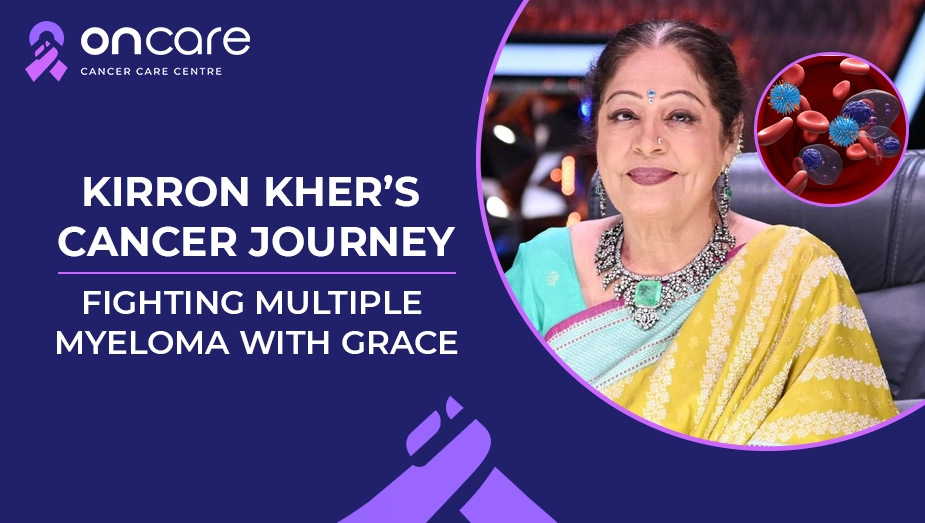Table of Contents
Which Type of Blood Cancer Is Most Dangerous According to Oncologists?

A lot of individuals are afraid and bewildered when they hear the words "blood cancer." It's normal to be scared, especially if you don't know much about the disease. Many people wish to discover which kind of blood cancer is the most deadly. Some blood cancers grow slowly, but others can spread very quickly. Knowing the distinction is vital because it helps you understand your symptoms, how quickly you require treatment, and what doctors normally recommend.
This article will discuss the numerous kinds of blood cancers, how they work, and which one physicians say is the most hazardous. The language is really easy to understand and kind, which will make you feel calm, informed, and sure of yourself.
Things You Should Know About Blood Cancer
Blood cancer begins in the tissues that create blood, such as the lymph nodes and bone marrow. These tumors modify how blood cells grow and do their jobs. The body stops generating cells that are good for you and starts making cells that don't work well. This has an effect on the immune system, the flow of oxygen, and a lot of other critical things that the body does.
The three most common kinds of blood malignancies are leukemia, lymphoma, and myeloma. Each type works differently and has distinct impacts on the body. Some varieties are benign and grow slowly, while others are quick and aggressive.
When oncologists talk about which type of blood cancer is the worst, they usually mean how quickly it spreads, how awful the symptoms are, and how hard it is to treat without immediate care.
Leukemia
Leukemia is a type of cancer that affects white blood cells. It originates in the bone marrow and can spread swiftly. There are two basic types: chronic leukemia and acute leukemia. Acute leukemia spreads very quickly, thus it needs to be treated straight away. Chronic leukemia grows slowly and may not show any signs for a long period.
Acute lymphoblastic leukemia (ALL) and acute myeloid leukemia (AML) are the two main kinds of acute leukemia. They can be hazardous because they quickly create more strange cells in the blood and bone marrow. If not treated quickly away, acute leukemia can lead to significant infections, bleeding, and damage to organs.
People frequently consider that AML is one of the more hazardous forms since it spreads swiftly and prohibits the body from creating blood cells in a short length of time. Oncologists treat ALL very seriously, especially in adults, because it can spread swiftly to the brain, spinal cord, and other organs.
Lymphoma
Lymphoma is a disease that affects the lymphatic system, which is a large element of the immune system. It begins in the lymph nodes and can spread to other areas of the body, such as the liver, spleen, and bone marrow. There are two primary kinds: Hodgkin lymphoma and non-Hodgkin lymphoma.
Hodgkin lymphoma is often more treatable, and if it is found early, it often has a good recovery rate. However, there are a lot of different kinds of non-Hodgkin lymphoma. Some develop slowly, but others are highly aggressive.
Diffuse large B-cell lymphoma (DLBCL) is one of the most aggressive kinds of non-Hodgkin lymphoma. It might grow quickly, therefore you need to treat it straight away. If not treated right away, it could become life-threatening. Because of this, physicians say that aggressive non-Hodgkin lymphoma is one of the most deadly blood malignancies.
Myeloma
Myeloma, which is also known as multiple myeloma, begins in plasma cells. These are a type of white blood cell that helps the body fight infections. When these cells turn cancerous, they can hurt the immune system, bones, and kidneys.
People with myeloma grow at different rates. Some forms are slow to act, while others act quickly and violently. The more aggressive types can hurt bones, cause serious infections, and make the body weak quickly. Even though treatments have gotten a lot better in the last few years, advanced myeloma can still be dangerous if it's not found early.
What Kind of Blood Cancer Is the Most Dangerous?
When asked which type of blood cancer is most dangerous, oncologists usually say the ones that grow quickly and are very aggressive. Some of these are acute leukemias like AML and ALL and some aggressive non-Hodgkin lymphomas like DLBCL.
These cancers spread quickly, show up with symptoms out of the blue, and can be deadly if not treated right away. They quickly hurt important organs, the function of bone marrow, and the body's ability to fight off infections.
But the word "dangerous" doesn't mean "hopeless." If you get the right treatment early on, many aggressive blood cancers respond very well. Modern treatments, transplants, targeted drugs, and immunotherapy have all greatly improved survival rates.
The level of danger also depends on the patient's age, health, how early the cancer is found, and how quickly treatment starts. That's why it's so important to be aware and get checked out early.
Why Some Blood Cancers Get So Bad
Aggressive blood cancers grow very quickly, which doesn't give the body much time to adjust. These cancers often make a lot of abnormal cells that push healthy blood cells out of the way. This can cause serious infections, fatigue, bleeding, and problems with organs.
They can also move to other parts of the body, like the brain, liver, and spleen. When this happens, treatment needs to be more serious and urgent. For a lot of patients, being able to recognize symptoms early on makes a big difference in how well treatment works.
Doctors focus on quick diagnosis because the sooner they find aggressive blood cancers, the better the chances of recovery.
Signs of illness that shouldn't be ignored right away
At first, the signs of blood cancer may not be very strong or obvious. But you should never ignore some changes in your body. People may feel very tired, get sick a lot, bruise easily, or lose weight without even trying. Some people get fevers, night sweats, or swollen lymph nodes.
These signs don't always mean cancer, but you should see a doctor if they last more than a few weeks. Blood tests or bone marrow tests done early can help find the cancer quickly and make treatment work better.
How Doctors Figure Out How Dangerous It Is
When oncologists choose which type of blood cancer is most dangerous, they think about a lot of things. They look at how quickly the cancer spreads, how many organs it affects, and how quickly symptoms show up. They also look at the patient's age, medical history, and how well the body responds to the first treatments.
Aggressive cancers need strong treatment right away. Instead of urgent therapy, slow cancers may need to be watched regularly. Doctors make treatment plans based on what each patient's body needs at the time.
Consult Today
Knowing which type of blood cancer is most dangerous helps you stay aware and informed. Acute leukemias and aggressive non-Hodgkin lymphomas are often thought to be the most dangerous because they spread quickly and need immediate care. But many people get better and live long, healthy lives after getting an early diagnosis and modern medical care.
Oncare Cancer Hospital is a reliable place to go for every step of your cancer journey. They offer expert advice, caring care, and cutting-edge treatment options. Their team gives you clear advice, strong support, and world-class care so you can feel safe and sure.
Frequently Asked Questions
Acute leukemias, such as AML and ALL, proliferate rapidly and require immediate intervention.
No, some kinds grow slowly and are easier to deal with, especially if you catch them early.
Yes, many aggressive blood cancers respond very well to modern treatments when they are found early.
Always see a doctor if you are tired, have a fever, have an infection, lose weight, or have swollen lymph nodes.
Book an Appointment
Related Blogs

What Is Blood Cancer: From Early Detection to Recovery
Learn about blood cancer, including its types, early signs, causes, and how doctors diagnose and treat it. Early detection and modern treatments offer hope for recovery.

Kirron Kher’s Cancer Journey: Fighting Multiple Myeloma with Grace
Discover more about Kirron Kher’s cancer journey and chemotherapy treatments, the importance of positivity, and how she has become an inspiration to many patients!

How Rishi Kapoor Fought Acute Myeloid Leukemia
Discover more about how Rishi Kapoor fought acute myeloid leukemia and his cancer diagnosis, treatment journey, emotional and physical struggle, and death!

